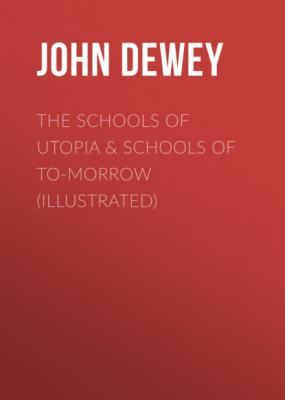ТОП просматриваемых книг сайта:
The Schools of Utopia & Schools of To-morrow (Illustrated). Джон Дьюи
Читать онлайн.Название The Schools of Utopia & Schools of To-morrow (Illustrated)
Год выпуска 0
isbn 9788027226030
Автор произведения Джон Дьюи
Жанр Документальная литература
Издательство Bookwire
John Dewey
The Schools of Utopia & Schools of Tomorrow
(Illustrated)
A Case for Inclusive Education from the Renowned Philosopher, Psychologist & Educational Reformer of 20th Century
Published by
Books
- Advanced Digital Solutions & High-Quality eBook Formatting -
2017 OK Publishing
ISBN 978-80-272-2603-0
Table of Contents
A test with books open. (Fairhope, Alabama.) Frontispiece.
Schools Of To-morrow
Chapter I. Education As Natural Development
Chapter II. An Experiment In Education As Natural Development
Chapter III. Four Factors In Natural Growth
Chapter IV. The Reorganization Of The Curriculum
Chapter VI. Freedom And Individuality
Chapter VII. The Relation Of The School To The Community
Chapter VIII. The School As A Social Settlement
Chapter IX. Industry And Educational Readjustment
Chapter X. Education Through Industry
Chapter XI. Democracy And Education
Preface
There has been no attempt in this book to develop a complete theory of education nor yet review any “systems” or discuss the views of prominent educators. This is not a text book of education, nor yet an exposition of a new method of school teaching, aimed to show the weary teacher or the discontented parent how education should be carried on. We have tried to show what actually happens when schools start out to put into practice, each in its own way, some of the theories that have been pointed to as the soundest and best ever since Plato, to be then laid politely away as precious portions of our “intellectual heritage.” Certain views are well known to every teacher who has studied pedagogy, and portions of them form an accepted part of every theory of education. Yet when they are applied in a classroom the public in general and other teachers in particular cry out against that classroom as a place of fads and caprices; a place lacking in any far reaching aim or guiding principle. We have hoped to suggest to the reader the practical meaning of some of the more widely recognized and accepted views of educational reformers by showing what happens when a teacher applies these views.
The schools we have used for purposes of illustration are all of them directed by sincere teachers trying earnestly to give their children the best they have by working out concretely what they consider the fundamental principles of education. More and more schools are growing up all over the country that are trying to work out definite educational ideas. It is the function of this book to point out how the applications arise from their theories and the direction that education in this country seems to be taking at the present time. We hope that through the description of classroom work we may help to make some theories living realities to the reader. On the other hand, we have dwelt on theoretical aspects in order to point out some of the needs of modern education and the way in which they are being met.
The schools that are used for illustration were chosen more or less at random; because we already knew of them or because they were conveniently located. They do not begin to represent all that is being done to-day to vitalize the school life of children. Schools with like traits may be found in every part of the country. Space has forced us to omit a very important movement—the reorganization of the rural school and the utilization of agriculture in education. But this movement shows the tendencies that mark the schools we have described; tendencies towards greater freedom and an identification of the child’s school life with his environment and outlook; and, even more important, the recognition of the rôle education must play in a democracy. These tendencies seem truly symptoms of the times, and with a single exception proved to be the most marked characteristics of all the schools visited.
Without the very material help and interest of the teachers and principals of the schools visited this book would not have been possible. We thank them most sincerely for the unfailing courtesy they have shown in placing their time and the material of their classrooms at our disposal. Our thanks are especially due to Mrs. Johnson of Fairhope and to Miss Georgia Alexander of Indianapolis for information and suggestions. The visiting of the schools with one exception was done by Miss Dewey, who is also responsible for the descriptive chapters of the book.
J.D.
Chapter I
Education As Natural Development
“We know nothing of childhood, and with our mistaken notions of it the further we go in education the more we go astray. The wisest writers devote themselves to what a man ought to know without asking what a child is capable of learning.” These sentences are typical of the “Émile” of Rousseau. He insists that existing education is bad because parents and teachers are always thinking of the accomplishments of adults, and that all reform depends upon centering attention upon the powers and weaknesses of children. Rousseau said, as well as did, many foolish things. But his insistence that education be based upon the native capacities of those to be taught and upon the need of studying children in order to discover what these native powers are, sounded the key-note of all modern efforts for educational

